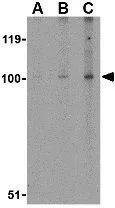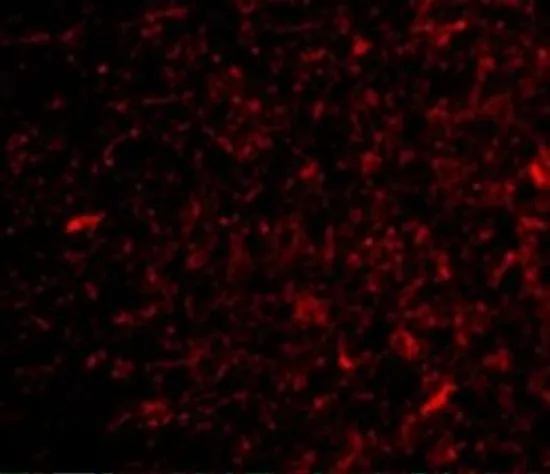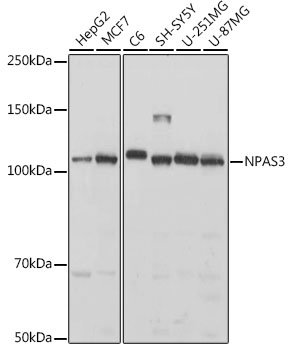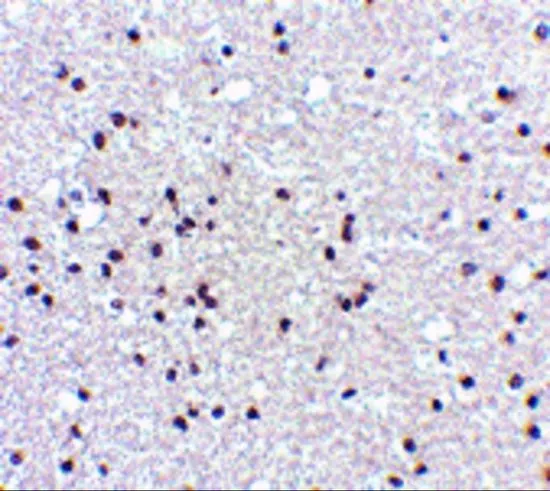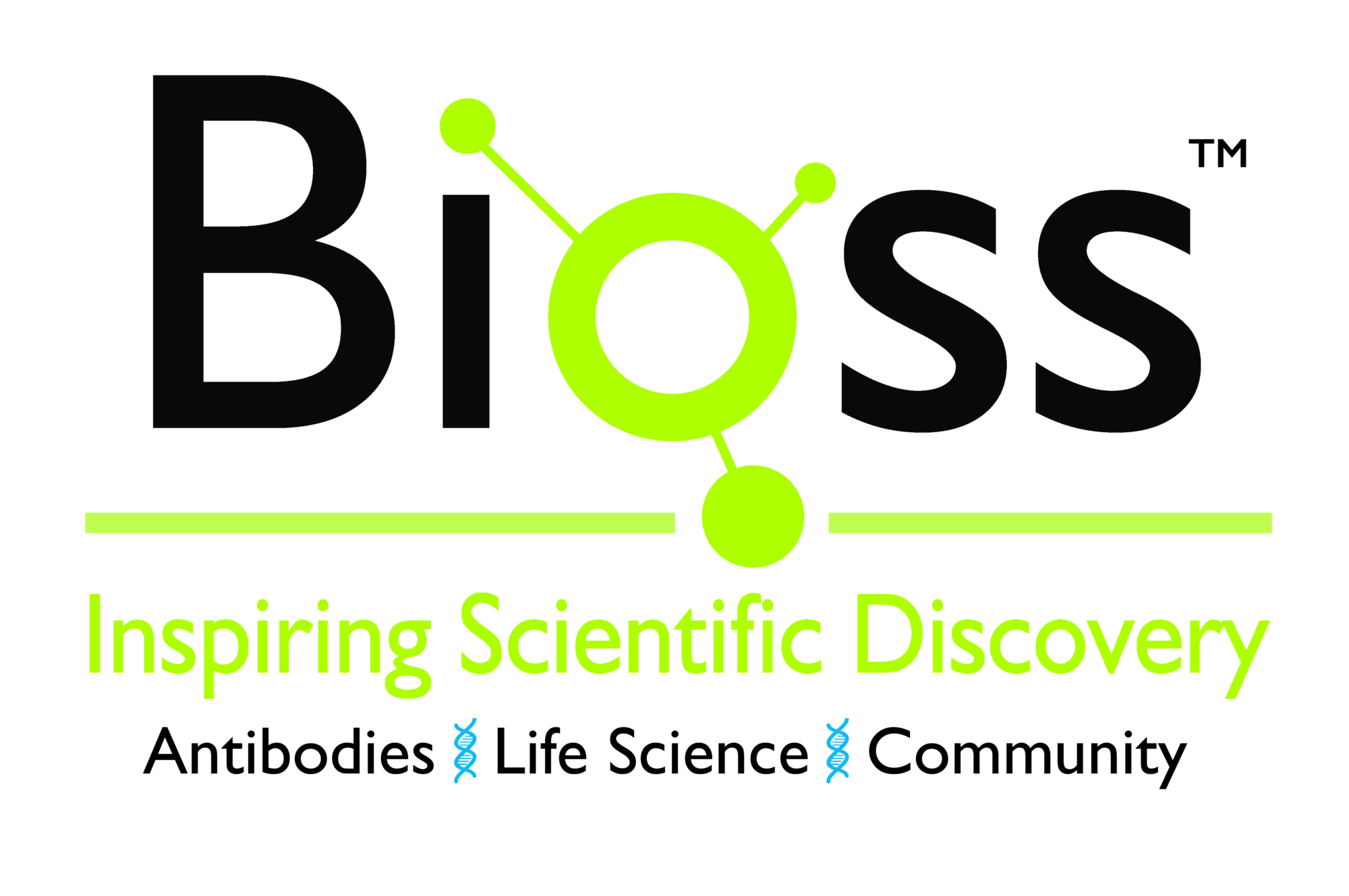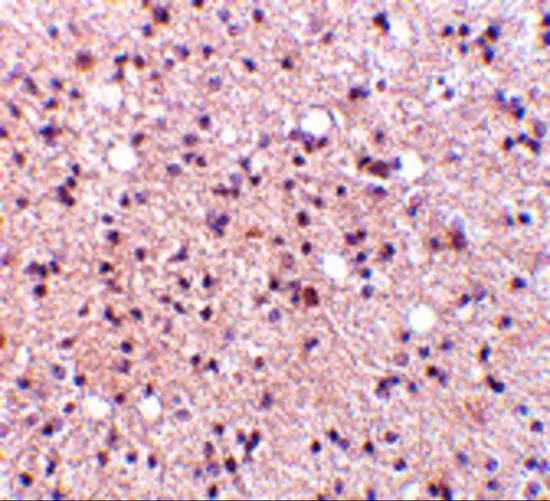
IHC-P analysis of human brain tissue using GTX85444 NPAS3 antibody. Working concentration : 5 microg/ml
NPAS3 antibody
GTX85444
ApplicationsWestern Blot, ELISA, ImmunoHistoChemistry, ImmunoHistoChemistry Paraffin
Product group Antibodies
ReactivityHuman, Mouse, Rat
TargetNPAS3
Overview
- SupplierGeneTex
- Product NameNPAS3 antibody
- Delivery Days Customer9
- Application Supplier NoteWB: 0.5 - 2 microg/mL. IHC-P: 5 microg/mL. *Optimal dilutions/concentrations should be determined by the researcher.Not tested in other applications.
- ApplicationsWestern Blot, ELISA, ImmunoHistoChemistry, ImmunoHistoChemistry Paraffin
- CertificationResearch Use Only
- ClonalityPolyclonal
- Concentration1 mg/ml
- ConjugateUnconjugated
- Gene ID64067
- Target nameNPAS3
- Target descriptionneuronal PAS domain protein 3
- Target synonymsMOP6, PASD6, bHLHe12, neuronal PAS domain-containing protein 3, PAS domain-containing protein 6, basic-helix-loop-helix-PAS protein MOP6, class E basic helix-loop-helix protein 12, member of PAS protein 6, neuronal PAS3
- HostRabbit
- IsotypeIgG
- Protein IDQ8IXF0
- Protein NameNeuronal PAS domain-containing protein 3
- Scientific DescriptionNeuronal PAS domain protein 3 (NPAS3) is a brain-enriched basic helix-loop-helix PAS domain transcription factor and is broadly expressed in the developing neuroepithelium and has recently found to be disrupted by genetic translocation in a family affected with schizophrenia. It was recently shown to be involved in the regulation of FGF signaling in the dentate gyrus by controlling the expression of the FGF receptor subtype 1 and in turn neurogenesis emanating from this region. NPAS3- mice were growth-retarded and displayed brain defects that included reduced size of the anterior hippocampus, hypoplasia of the corpus callosum, and enlargement of the ventricles, as well as several behavioral abnormalities. Furthermore, these NPAS3- mice also exhibited disruptions in several neurosignaling pathways involving glutamate, dopamine, and serotonin. These results demonstrate the essential role played by NPAS3 during structural and functional brain development. At least three isoforms of NPAS3 are known to exist.
- ReactivityHuman, Mouse, Rat
- Storage Instruction-20°C or -80°C,2°C to 8°C
- UNSPSC12352203

